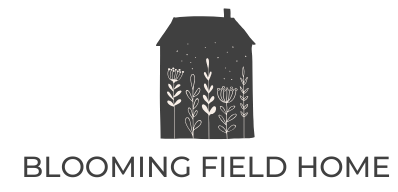In a world where DIY disasters are just a YouTube search away, home renovation software has become the superhero every homeowner didn’t know they needed. Forget the days of guessing measurements and praying the paint color looks good—this tech-savvy sidekick streamlines the entire process. Whether it’s a kitchen overhaul or a cozy bathroom update, these tools transform chaos into creativity, turning dreams into reality with a few clicks.
Home Renovation Software
Home renovation software serves as a powerful tool for homeowners, streamlining the renovation process. These applications bring clarity and efficiency to design choices and project management.
Definition And Purpose
Home renovation software comprises digital platforms designed to assist in planning and executing renovation projects. These applications help manage aspects such as budgeting, timelines, and design visualization. Users access tools for creating floor plans, selecting materials, and managing contractors. The primary purpose involves simplifying complex renovation tasks, which allows users to focus on creativity and design preferences. With user-friendly interfaces, these software solutions cater to both experienced renovators and novices.
Importance In The Renovation Process
In the renovation process, home renovation software enhances organization and communication. These tools provide accurate measurements that eliminate errors during construction. By using them, homeowners can visualize their design concepts, which leads to more informed decisions. Accurate budgeting tools within the software prevent overspending and help prioritize essential features. Furthermore, project management modules streamline collaboration among homeowners, contractors, and suppliers, which increases project efficiency. Overall, they play a crucial role in transforming ambitious renovation ideas into successful outcomes.
Key Features To Look For

Home renovation software offers several key features that enhance the renovation experience. Users benefit from tools that streamline various aspects of their projects.
Design Tools
Strong design tools form a central element of effective home renovation software. These tools help homeowners visualize their projects through 3D renderings and realistic images. Customizable templates provide a starting point for various rooms, supporting creativity during the design phase. Color palettes allow users to experiment with different styles before committing. Some software includes augmented reality capabilities, enabling users to see how changes will look in real time. Ultimately, robust design features facilitate informed decisions about layouts and aesthetics.
Budgeting Tools
Effective budgeting tools play a crucial role in home renovation software. These features allow users to set budgets and track expenses throughout the project. Cost estimation tools offer even greater accuracy by calculating material and labor costs based on specific design choices. Users can monitor spending against the budget in real-time, ensuring they avoid overspending. Notifications alert users when they approach budget limits, fostering financial discipline. Comprehensive reports provide insights into spending patterns and help in future project planning.
Project Management Features
Key project management features enhance collaboration and organization within home renovation software. Integrated communication tools bridge the gap between homeowners and contractors, simplifying discussions and clarifying project details. Scheduling modules keep everyone on the same page by outlining project timelines and milestones. Task management tools allocate responsibilities among team members, ensuring accountability and progress tracking. File sharing capabilities allow easy access to important documents and design files. With these features, users can create a streamlined workflow, turning their renovation visions into reality.
Popular Home Renovation Software Options
Various home renovation software options have gained popularity for their unique features and user-friendly interfaces. Each software caters to different needs, enhancing the renovation experience significantly.
Software A
Software A, known for its robust design capabilities, allows users to create detailed 3D renderings of their spaces. This platform offers customizable templates, helping homeowners visualize their projects effectively. Users appreciate the intuitive interface, making navigation simple for both beginners and experts. Moreover, integrated budgeting tools enable seamless expense tracking, ensuring users stay within their financial limits. With project management features, collaboration among homeowners and contractors flourishes, ultimately streamlining the entire renovation process.
Software B
Software B excels in its comprehensive project management capabilities. It organizes tasks efficiently and keeps users updated on project timelines. Users can communicate easily through integrated messaging systems, facilitating smoother collaboration among team members. Budgeting has also been prioritized in this software, allowing for real-time expense tracking and budget adjustments. Homeowners value the visual design options, such as augmented reality, which enhances the decision-making process significantly. Overall, this software proves essential for managing large-scale renovations effectively.
Software C
Software C stands out with its advanced visualization tools. Homeowners enjoy high-quality graphics that bring design concepts to life, allowing them to experiment with various styles and materials. The platform offers strong budgeting modules, helping users set realistic financial goals while tracking expenses rigorously. With scheduling features, users can organize timelines efficiently, ensuring projects remain on track. Additionally, the software promotes collaboration through easy file sharing and task management capabilities, making it suitable for both DIY renovators and professional contractors.
Pros And Cons Of Using Home Renovation Software
Home renovation software offers significant advantages and notable drawbacks. Users should weigh these factors before making a decision.
Advantages
Efficiency increases when utilizing home renovation software. This technology streamlines project management tasks such as budgeting and scheduling. Accurate measurements minimize construction errors, enhancing overall project quality. Many software options include powerful design tools, allowing for detailed visualizations through 3D renderings and augmented reality features. Customizable templates also enable users to experiment with various design concepts. Communication improves among stakeholders, including homeowners, contractors, and suppliers. Enhanced collaboration tools facilitate document sharing and task management, fostering a more organized approach.
Disadvantages
Limited flexibility can occur with some home renovation software. Certain programs may not accommodate unique design requirements or constraints. Costs associated with purchasing specific software licenses might exceed initial budgets, especially when multiple subscriptions are necessary. A learning curve can present challenges for novice users who may struggle with complex features. Some software may lack essential features, affecting its overall functionality. Additionally, reliance on technology can become a concern when unexpected technical issues arise, leading to potential project delays.

